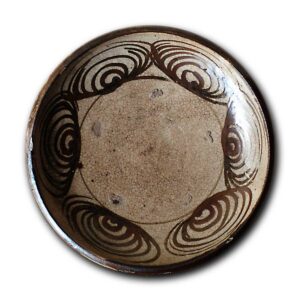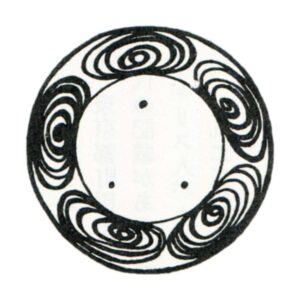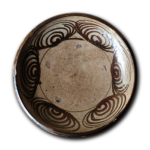

A large dish or bowl for the kitchen with a horse’s-eye pattern. Originally produced in the Seto region of Aichi Prefecture, the date of origin is unknown, but it was widely produced as a slotted bowl for daily use, and its production ceased in the early Meiji period. There are large, medium, and small vessels, the largest being about 35 cm and the smallest about 20 cm.
The ground is soft and the glaze is a light white color with a horse’s eye-like pattern. Because they do not have a rim, the unit production cost is lower than that of stone plates, and by the end of the Edo period, stone plates had been overpowered by horse’s-eye plates and had faded into the background. Since the Taisho era (1912-1926), stone plates have been appreciated by connoisseurs because of the movement to praise private kiln wares.








